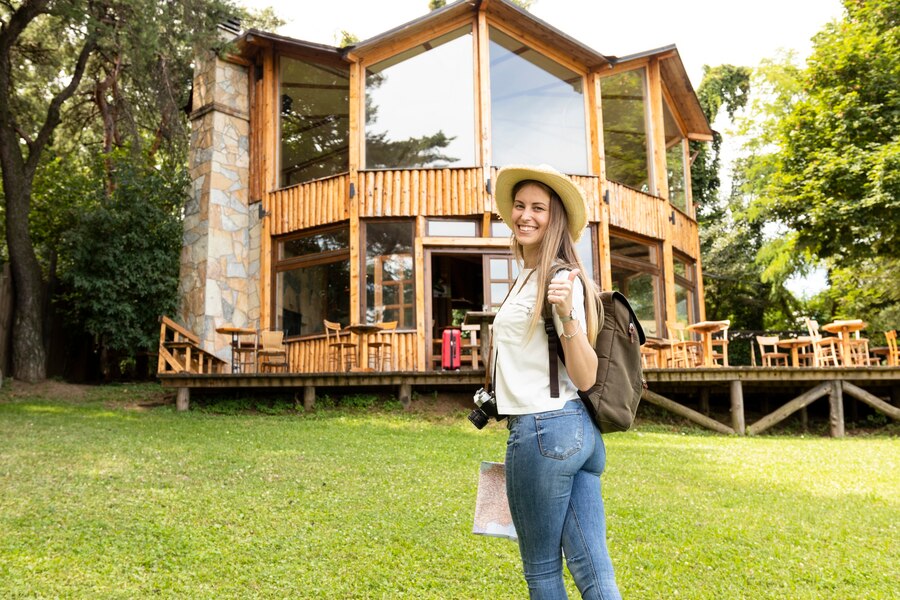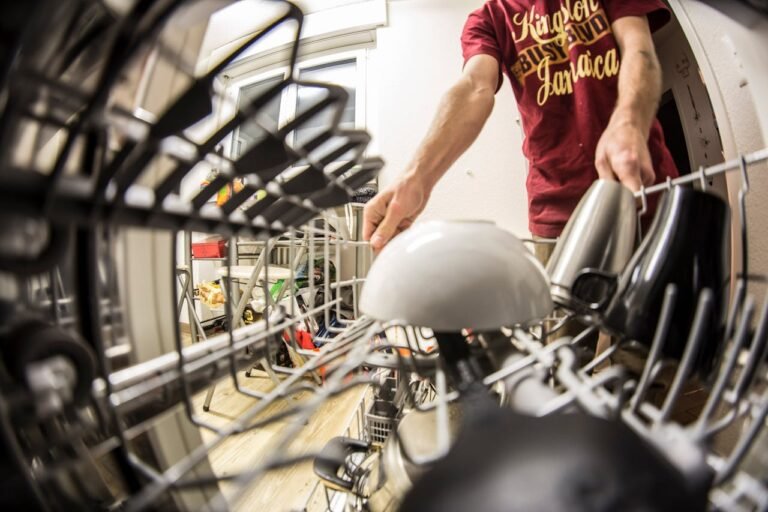Are Micro Homes Eco-Friendly? A Complete Guide to Sustainable Tiny Living
Rapid urbanisation and inflation will continue to drive up housing prices. Resource extraction and the ongoing expansion into nature to meet housing demand have environmental consequences. What are the options for affordable and sustainable housing? One solution is the micro-home movement, where families and individuals live in resource-efficient homes. This is helping to address the housing crisis. However, while micro-homes are gaining popularity, an important question arises: Are micro-homes truly eco-friendly?
In this guide, we will explore the advantages and environmental impacts of these living spaces, how micro-homes are addressing housing shortages, and whether the current trend signals a positive shift toward a more sustainable future.

In This Article
- What Are Micro Homes?
- Global Popularity of Micro-Homes
- The Environmental Benefits of Tiny Living
- Interactive Table: Micro-Homes vs Traditional Home
- Micro-Homes and Their Roles in Addressing Homelessness
- The Psychological and Social Aspects of Tiny Living
- Is Tiny Living for Everyone?
- Conclusion
What Are Micro Homes?
Micro-homes are residential units with small sizes, typically measuring less than 45.5 square metres (500 square feet). Despite their compact size, these tiny living spaces are designed to provide comfort. Although small, these mini apartments come equipped with built-in bathrooms, kitchens, and multifunctional furniture to maximise the use of every inch of available space.
The micro-home concept is closely related to the tiny house movement, which has gained popularity in recent years. Micro-homes can be either stationary or mobile, with some versions designed to be easily moved on trailers. You may wonder: what makes these tiny living spaces stand out, particularly in terms of their environmental impact?
Global Popularity of Micro-Homes
The growing urban population continues to shrink available spaces for new projects. Urban centres are facing a shortage of affordable housing, which has made micro-homes more popular globally. In major cities like Tokyo, London, and Hong Kong, the adoption of micro-homes has increased due to rising real estate costs and limited space. According to a report by the United Nations, more than 55% of the world’s population lives in urban areas, and this figure is expected to rise to 68% by 2050.
The Environmental Benefits of Tiny Living
The building process for traditional homes remains resource-intensive, consuming large amounts of energy, water, and raw materials. Unlike traditional homes, micro-homes are sustainably designed to be more resource-efficient during construction and throughout their lifespan.
Smaller Space, Smaller Footprint
Micro-homes placed or built on a property occupy less space compared to traditional homes. A micro-home takes up an average of 400 square feet, and some very tiny homes can be as small as 60 square feet. Living in a tiny space means less energy is required to heat, cool, and light indoor areas compared to traditional homes.
According to a 2010 study by the Oregon Department of Environmental Quality (DEQ), reducing the square footage of a home is the single most effective way to lower its environmental impact. The study found that the smaller the home, the fewer resources are required for construction, maintenance, and daily operations.
Energy Efficiency
Energy efficiency is environmentally important and remains one of the key benefits of micro-homes. Due to their size, these tiny homes require less energy for powering, cooling, and heating. A traditionally sized home consumes more energy to light and regulate indoor temperatures during different seasons. For example, in colder climates, heating systems in larger homes use a significant amount of energy to provide warmth.
Additionally, micro-homes are often equipped with energy-efficient appliances, insulation, and lighting to further reduce their carbon footprint. Solar panels are also commonly installed in micro-homes.
The Role of Solar Energy in Tiny Homes
Tiny homes are often powered by renewable energy sources. Many homeowners of these small dwellings install solar panels to run appliances, lighting, and heating systems. According to a report from Green Building Advisor, homes equipped with solar panels can reduce their annual carbon emissions by up to 30%.
Learn More: Best Eco-Friendly Basement Flooring Ideas
Minimal Use of Building Materials
Constructing micro-homes requires fewer building materials compared to traditional homes. The construction industry heavily relies on extracting resources in large quantities, which contributes to environmental degradation. By downsizing the physical structure, less lumber, steel, concrete, and other building materials are needed for the construction of micro-homes.
A 2019 study published in the Journal of Cleaner Production found that the embodied carbon of a house—the carbon emissions resulting from construction—can be reduced by as much as 34% by downsizing from a traditional home to a prefabricated tiny home.
Reduced Construction Time: Since micro-homes are quite small, they can be built quickly with fewer materials. Prefabricated techniques are often used in micro-home construction, ensuring efficient use of both materials and labour while minimising site waste.
Water Conservation in Micro-Homes
Smaller living spaces mean reduced resource consumption. Micro-homes use less water overall, especially when equipped with water-saving low-flow showerheads, faucets, and efficient washing machines.
According to the Department of Energy, installing water-efficient fixtures can reduce household water use by 40%. Micro-homes can further promote water conservation by integrating water-saving technologies.
Waste Reduction: Less Is More
Micro-homes generate less waste compared to large traditional homes occupying hundreds of acres. Construction waste from building large homes continues to accumulate in landfills. According to the EPA, the construction and demolition sector was responsible for over 600 million tons of waste in 2018 alone.
The construction of micro-homes requires fewer raw materials and generates less waste. Many micro-home projects utilise prefabrication methods, which minimise on-site waste and prevent over-ordering of materials that would contribute to additional waste.
Interactive Table: Micro-Homes vs Traditional Home
Environmental Impact
| Metric | Traditional Home | Micro-Home |
| Average Square Footage | 2,500 sq. ft. | 500 sq. ft. |
| Energy Consumption (kWh/year) | 12,000 | 3,600 |
| Carbon Emissions (tons/year) | 10-15 | 2-3 |
| Water Usage (gallons/day) | 100 | 30 |
| Construction Material Use | 50-70 tons | 8-12 tons |
| Waste Produced (lbs/year) | 3,000 | 600 |
Micro-Homes and Their Roles in Addressing Homelessness
While micro-homes are making headlines for their environmental benefits, they are also helping to solve the problem of homelessness, particularly in densely populated cities.
Case Study: The Dwelling in Tallahassee, Florida
A prime example of micro-homes addressing homelessness can be seen in Tallahassee, Florida. The Dwellings is a community of micro-homes designed to provide affordable housing. This successful project consists of 130 eco-friendly homes, each measuring 200 square feet and powered by solar panels. Other features include rainwater harvesting systems and energy-efficient appliances.
The Dwellings not only provide affordable housing but also foster a supportive environment, offering hope to individuals struggling with homelessness.
Global Approaches to Micro-Homes for the Homeless
Micro-homes are addressing homelessness not just in the United States but also in other parts of the world. Amsterdam and Berlin are two European cities that have introduced micro-homes as part of a broader strategy to reduce homelessness. These projects often involve converting vacant spaces and unused public land into micro-housing communities.
In Los Angeles, the “Hope on Alvarado” project is constructing prefabricated tiny apartments for homeless people in the city. This housing project is being built quickly and sustainably, with the intent of providing affordable housing for homeless individuals. London, Vancouver, and Melbourne are among the cities that have adopted the idea of reducing homelessness through micro-housing communities.
A 2020 study and the National Alliance to End Homelessness (NAEH) have highlighted micro-homes as part of a strategy to reduce homelessness. NAEH’s research shows that affordable and sustainable housing can significantly decrease the number of people living on the streets.
Learn More: 10 Innovative Green Tech Solutions for Modern Homes
The Psychological and Social Aspects of Tiny Living
The Benefits of Simplified Living
There are reports from micro-home residents who believe that living in a small space encourages them to simplify their lives, focus on what truly matters, and reduce unnecessary consumption. A study conducted by the American Psychological Association (APA) found that people living in smaller homes often experience increased mental clarity and reduced stress.
Simplified living can also foster a stronger sense of community. Micro-home villages, like Boneyard Studios in Washington, D.C., promote social interaction and collaboration among community members.
Potential Downsides: Privacy and Storage Issues
Micro-homes are not without drawbacks. Privacy can be a major issue, especially for couples or families living in such tiny spaces. These homes are often best suited for single occupants, as the limited storage space can be challenging.
Is Tiny Living for Everyone?
While micro-homes are preferred by individuals who value simplified living, they remain a housing option that is not suitable for everyone. Due to their limited living space, they wouldn’t be ideal for a couple or a family of three or more. Privacy concerns are another issue, as they typically consist of a single living area with no extra rooms. Additionally, the storage capacity in micro-homes is minimal, making them suitable for only the essential belongings of a single occupant.
Conclusion
According to reports we have seen so far, micro-homes are more eco-friendly than traditionally sized homes. Their tiny living space is advantageous, particularly in reducing energy consumption, building material use, and waste generation. Micro-homes offer a viable solution to housing shortages and homelessness in urban areas.
The environmental benefits of these tiny living spaces vary based on factors such as the construction process, energy sources, and materials used. Micro-homes constructed with sustainable building materials and powered by renewable energy have a lower carbon footprint. The eco-friendliness of a micro-home ultimately depends on the choices made during construction and throughout the home’s lifespan.
Micro-homes are not just sustainable and affordable housing options, but more of a lifestyle choice to minimise housing carbon emissions through efficient living. As the global population continues to grow, it’s only a matter of time before more people start embracing simpler living in smaller spaces. Abandoned lots in urban areas may also be converted into communities of sustainably designed micro-homes. We have seen successful projects in major cities that use eco-friendly micro-homes to address homelessness.







